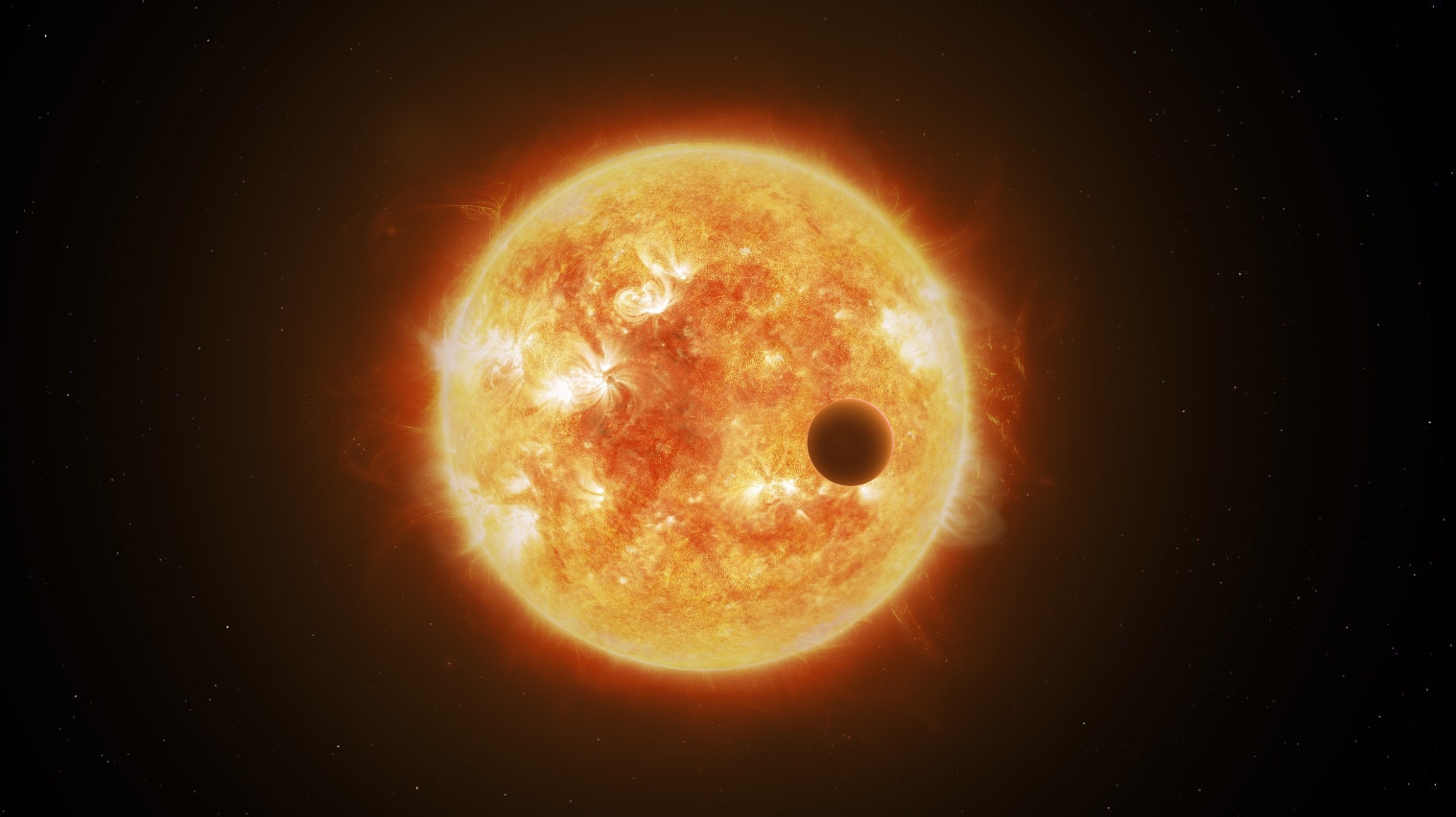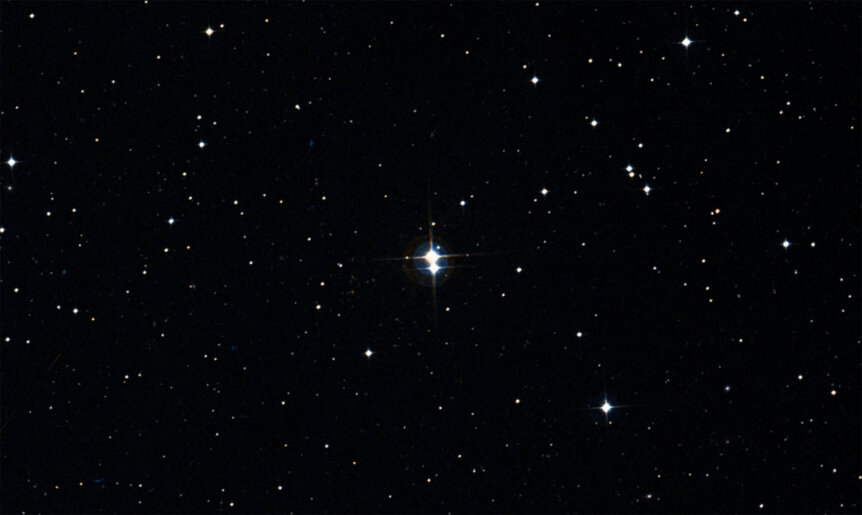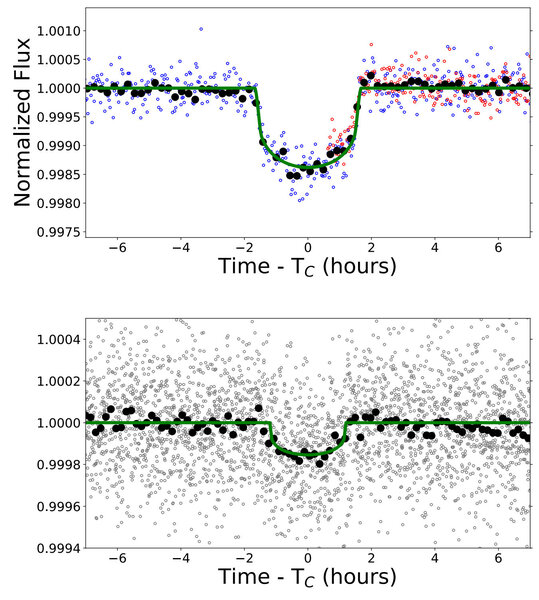Create a free profile to get unlimited access to exclusive videos, sweepstakes, and more!
TESS may have bagged its first Earth-sized exoplanet!

The hunt for alien worlds orbiting aliens stars continues apace: NASA’s orbiting TESS observatory just found a weird mini-Neptune orbiting a nearby star, and has also found tantalizing evidence of an Earth-sized world there as well! The latter is yet unconfirmed, but certainly worth follow-up efforts if possible.
TESS — the Transiting Exoplanet Survey Satellite — launched in early 2018, and by summer of that year was scanning the skies looking at millions of stars to see if they have exoplanets orbiting them. It uses the transit method, which means it looks for a slight dip in brightness from a star if a) a planet happens to orbit it, and 2) that planet’s orbit is nearly edge-on as seen from Earth, so it passes directly in front of the face of the star (think of it as a mini-eclipse).
By carefully analyzing the dips, the size of the planet can be found as well as the orbital period (the planet’s “year”). Unlike Kepler, which stared at one spot in the sky for years, TESS scans the whole sky over a two-year period, looking at the brightest stars. In general, brighter stars are closer to us, and because they’re bright it makes it easier for ground-based telescopes to follow up with more observations if needed.
Since it began operations, TESS has found nine confirmed exoplanets, and now we can add at least one more.
The star in question is called HD 21749 (the 21749th star in the Henry Draper catalog). It’s a star much like the Sun, but smaller (70% the diameter), less massive (0.73 times the Sun’s mass), cooler (4,640 K versus the Sun’s 5,800 K), and less luminous (it shines with only about 20% the Sun’s brightness). It’s pretty close by, too: Just 53 light years away. It’s about magnitude 8.1, meaning you’d need binoculars to see it, if you have a clear view of the southern constellation Reticulum.
The planet found, called HD 21749b, has an orbit about 30 million kilometers out from the star (the Earth orbits the Sun at five times that distance), and takes just under 36 days to orbit it once — this is the longest period planet found to date with TESS; it moves from place to place on the sky fairly often, so it’s hard to find planets with this long a period. Because the star is cooler than the Sun, this means the temperature of the planet is probably around 150°C, hotter than the boiling point of water. So don’t plan a vacation there.
Not that it would be fun otherwise. The planet is about 2.8 times the diameter of Earth. TESS can’t find a planet’s mass, but the astronomers who found this planet searched for observations of the star in archival data, and saw that HARPS — the High-Accuracy Radial-velocity Planet Searcher — had observed it many times. HARPS works by splitting the light up into extremely fine wavelengths (colors); when a planet orbits a star it tugs on the star, so the star makes a little orbit around the planet/star center of mass. That gives the light a small Doppler shift, which when measured yields the planet’s mass.
The signature of HD 21749b was clearly seen in the star’s light. They found it has a mass about 23 times Earth’s. That’s interesting! Given its size, that gives it a density of 5.7 grams per cubic centimeter, about the same density as Earth. For a smaller planet I’d say this means it has a similar composition to Earth: rock and metal. But this planet is much more massive, so it likely has a thick atmosphere.
I have to admit that’s weird. This planet is more massive than Neptune (which is about 17 times Earth’s mass) but smaller (Neptune is 3.9 times Earth’s diameter). So if it does have a thick atmosphere like Neptune, the core must be really dense to make up for it.
The second planet is less well-constrained. They saw a very feeble dip in the star’s light with a period of 7.8 days, consistent with a planet about 90% the Earth’s diameter (more like Venus, really). That period puts it about 10 million kilometers out, so it’s pretty hot, over 400°C! That’s hot enough to melt tin, zinc, and lead, so yikes.
However, it’s not yet possible to confirm the planet exists. The mini-Neptune was confirmed in the data using HARPS, but this candidate planet is too low-mass to be seen in that data. It would be a challenge to see it in any such data. The star is bright enough that perhaps dedicated follow-up observations with some ground-based telescopes may find it, but given that the drop in light is less than 0.02%, that’s, um, difficult. So it may be quite some time before this candidate is confirmed.
Another issue is that a bright star located very close to HD21749 in the sky could be interfering with the measurements of the second planet (the first mini-Neptune planet isn’t affected by the star, since its signature is seen in two different kinds of observations). So it’s possible this planet doesn’t exist at all! The data look pretty compelling, so I’m hoping, but at the moment there’s no way to be sure. I’ll note that if it is confirmed, it’s the smallest planet TESS has found yet.
In the meantime TESS is still looking at millions of other stars. One of its primary goals is to find 50 transiting exoplanets smaller than 4 times Earth’s diameter with measured masses. HD 21749b meets those criteria, so that’s at least one more down!
















